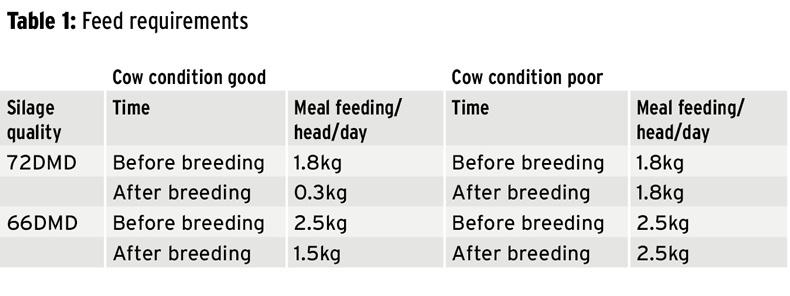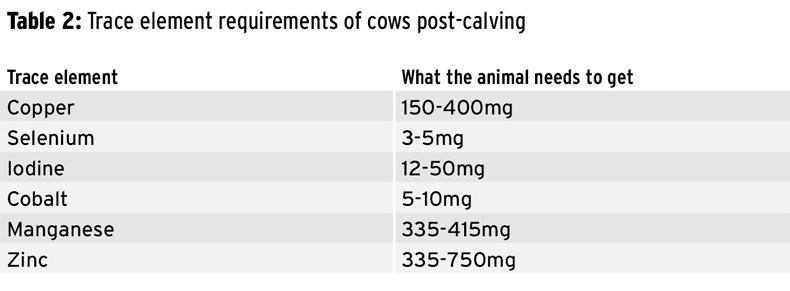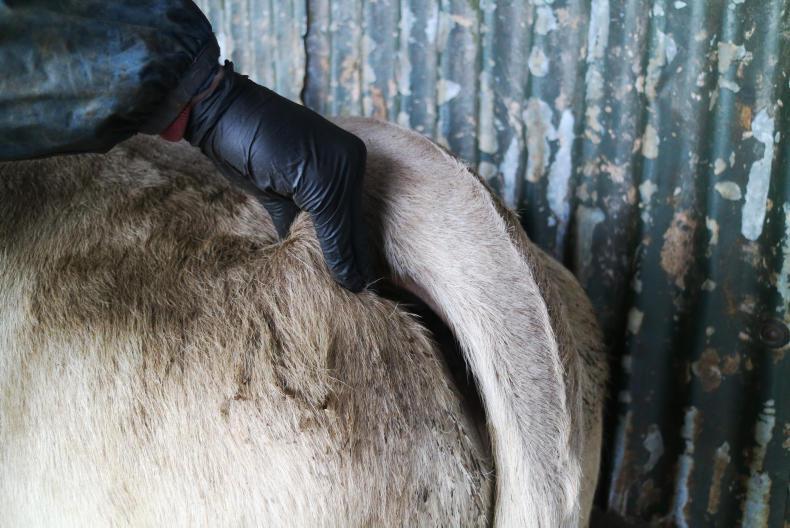Nutrition has a critical role to play in making sure autumn- calving cows return to cycling and go back in calf quickly.
It is also very important in maximising milk yield in the cow and, in turn, maximising calf growth rates. Getting silage analysed is a must in this system as it will determine the level of concentrates that needs to be fed during the post-calving period indoors.

Cow feed requirements during lactation are for maintenance of the cow, some growth in first-calved heifers and young cows and milk production.
If cows come indoors and are in poor condition, good-quality silage should be fed to appetite along with 2kg to 3kg of meal. If cows are in good condition, this can be reduced to 1.8kg pre-breeding and reduced to 0.3kg/head/day post-breeding.
Extra attention needs to be paid to first-time calvers, shy feeders, old cows and thin cows.
Aim for a high energy (UFL = 0.94+) ration with 16% protein.
See Table 1 for feed requirements. Feeding a good quality pre-calving mineral before calving is very important. In general, lick buckets are used and work well in autumn-calving situations.

Silent heats
A mineral deficiency post-calving can also upset a breeding programme by cows not cycling or having silent heats. Calcium, phosphorus and sodium will generally be supplied in adequate quantities in grass silage, but it is important to supplement with minerals via bolus, in feed or licks. See Table 2 for mineral requirements.

Read more
New online tool for bull buyers and sellers
What is the whole herd performance recording and what does it do?
What is the whole herd performance recording and what does it do?
12 steps understanding the beef indexes
Winter AI focus 2017
Nutrition has a critical role to play in making sure autumn- calving cows return to cycling and go back in calf quickly.
It is also very important in maximising milk yield in the cow and, in turn, maximising calf growth rates. Getting silage analysed is a must in this system as it will determine the level of concentrates that needs to be fed during the post-calving period indoors.

Cow feed requirements during lactation are for maintenance of the cow, some growth in first-calved heifers and young cows and milk production.
If cows come indoors and are in poor condition, good-quality silage should be fed to appetite along with 2kg to 3kg of meal. If cows are in good condition, this can be reduced to 1.8kg pre-breeding and reduced to 0.3kg/head/day post-breeding.
Extra attention needs to be paid to first-time calvers, shy feeders, old cows and thin cows.
Aim for a high energy (UFL = 0.94+) ration with 16% protein.
See Table 1 for feed requirements. Feeding a good quality pre-calving mineral before calving is very important. In general, lick buckets are used and work well in autumn-calving situations.

Silent heats
A mineral deficiency post-calving can also upset a breeding programme by cows not cycling or having silent heats. Calcium, phosphorus and sodium will generally be supplied in adequate quantities in grass silage, but it is important to supplement with minerals via bolus, in feed or licks. See Table 2 for mineral requirements.

Read more
New online tool for bull buyers and sellers
What is the whole herd performance recording and what does it do?
What is the whole herd performance recording and what does it do?
12 steps understanding the beef indexes
Winter AI focus 2017









 This is a subscriber-only article
This is a subscriber-only article










SHARING OPTIONS: